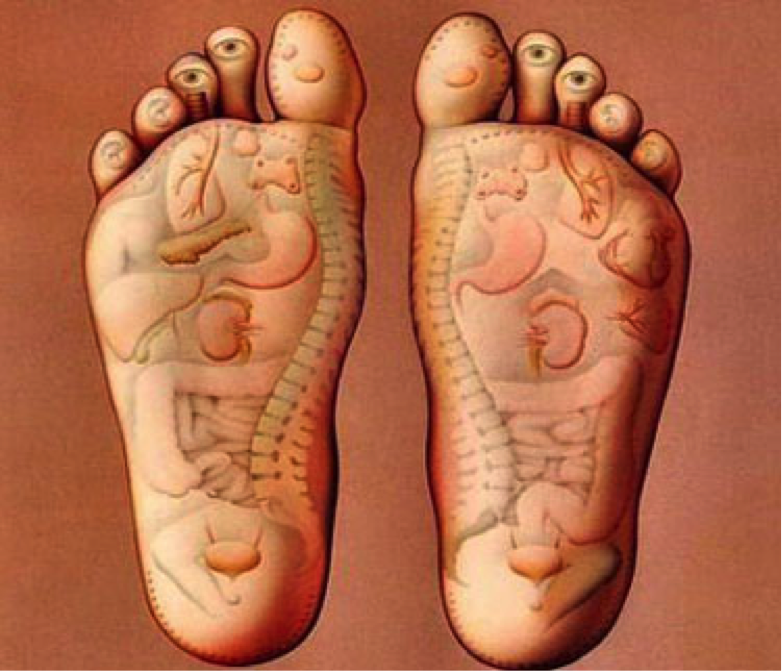
Reflexology
Originally practiced by the ancient Egyptians, reflexology is a touch/massage practice based on the idea that the reflexes in the foot are mirror images of all of the organs, tissues, muscles and glands in the body (see the above diagram for a map).
Although reflexology was considered an alternative or unconventional therapy when it was first introduced to the West, it has recently become a very popular practice, particularly in spas and wellness centers, but also in Chiropractics and Physical Therapy. Many mainstream doctors now recommend it, particularly to treat neuropathy of the legs, feet and toes.
There is some skepticism regarding the connection between points on the foot and parts of the body. In fact, I was quite the skeptic myself. So, in the name of research, I decided to try this therapy (who wouldn’t try a 50 minute foot massage?). Besides, I was having such terrible panic attacks, I would have had my eyeballs massaged if I thought it would stop them. Anyway, I went to a highly skilled reflexologist at a wellness center who was able to tell me within 5 minutes of touching my feet that I have thyroid issues, went through premature menopause, and have chronic lower back pain. She had no access to this information, as I did not fill out any health forms or talk to anyone at the center about my conditions. Needless to say, I was astounded.
Reflexology is performed by applying pressure with thumbs and fingers, often in specific patterns, to certain points on the foot, which are thought to correlate with other body parts. When my reflexologist pressed a certain spot on my instep, I felt it in my stomach, and, when she pinched the tip of one of my toes, I felt it in my head. By the time I left my first session, not only was I a believer, but also my sinuses had cleared and I was very relaxed.
Since that visit, I have read up on reflexology, and have tried to do it to myself; I was not successful—probably because I am not properly trained (and because it never feels the same when you substitute your hands for someone else’s)—but I encourage anxiety sisters and brothers to try this practice. The most important thing is to find a skilled reflexologist—one who has gone through substantial training. The American Reflexology Certification Board requires that the therapist pass a three part examination and have 110 hours of hands-on training experience before he/she is certified to have met the Board’s standards. In order to maintain the certification, the therapist must pay a hefty annual fee and attend 12 hours of approved continuing education every two years. Unless you have a referral from someone you trust, I would recommend choosing from the referral lists on the ARCB or the International Institute of Reflexology website.
Several studies have been done on this practice. One that caught my eye was done in 2000 with 23 cancer patients who, through reflexology, significantly reduced their anxiety and pain. To read about this study and others, check out http://www.reflexology-research.com.
